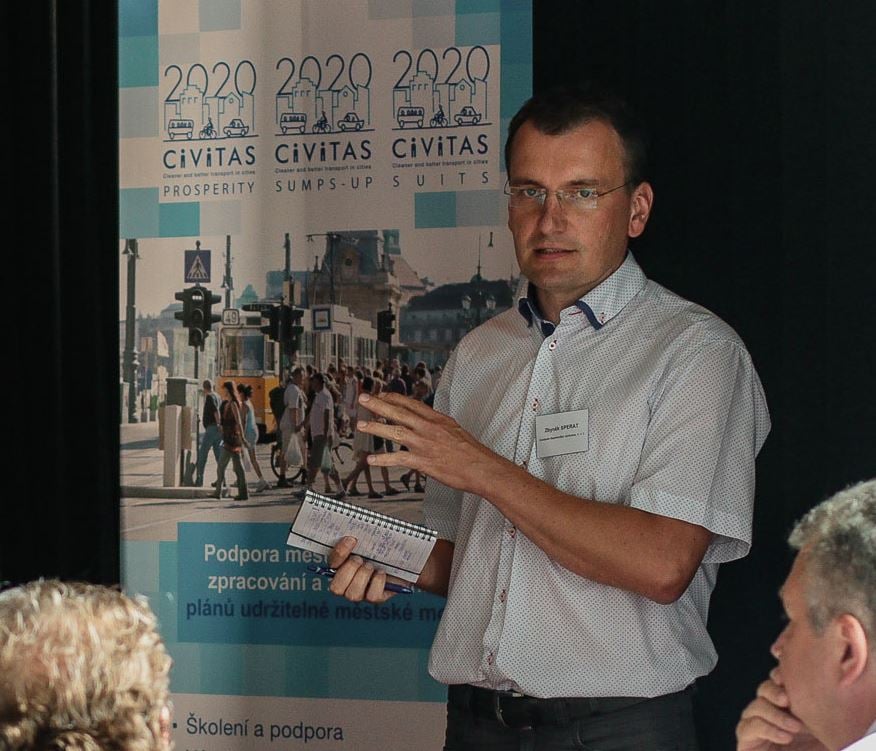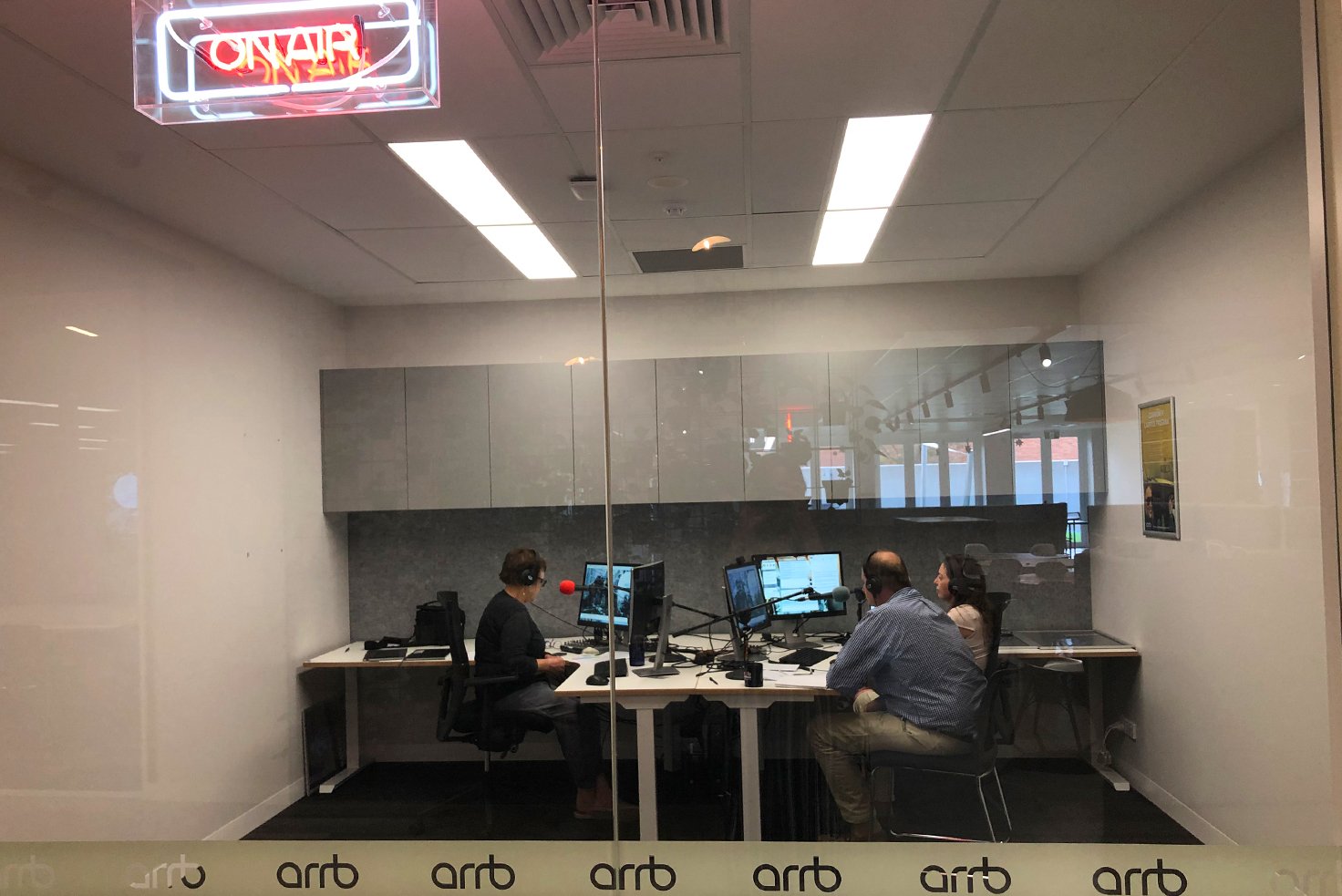
Dr Sperat outlined current urban mobility challenges and presented Sustainable Urban Mobility Planning (SUMP) as one of the key tools for meeting a city’s goal of urban mobility. Dr Sperat also outlined:
- How the SUMP approach is being applied in the context of EU member states
- Introduced the CIVITAS approach (which aims to deliver cleaner, better transport through innovative transport solutions), and
- Discussed the key role of bicycle transportation as a key aspect of SUMP
Dr Sperat also provided insights into his views of Australia’s current urban mobility (hint – he thinks we are too car orientated!)

We had a fantastic level of interest, with a record-breaking number of people register for the webinar event, and many, many questions received. Below is a summary of questions and answers received – thanks to Zbynek for providing these comprehensive responses.
Q: Active and public transport are important aspects of sustainable urban mobility. How do we encourage shift to these modes?
A: A combined reward and punishment approach works well. Active and public transport can be supported and encouraged by improving its infrastructure, service or shortening travel time. The interchange between these “sustainable” modes of transport can also be eased through high quality design of public transport stops, access to them or introduction of ‘bike and ride’. In conjunction, car use can be discouraged through tool such as parking management, paid parking and limiting car access to specific locations and/or times. There are more categories of general mobility management measures – organisational, institutional, legal or financial; a tailor-made approach is needed.
Q: What impact will connected and autonomous vehicles have on public transport use and sustainable urban mobility?
A: Connected and automated vehicles are fast approaching and this will change urban mobility. There is great potential of connected and autonomous vehicles to change car ownership, mobility patterns and traffic situation in cities. It will be easier access to personal mobility transport and shared services (on demand).
Continuing technological advancements will also reduce the reliance on fossil fuel. It will also change requirements for parking capacities and their locations. But we have to take into account that this innovation is just a tool and the key is how this tool will be set up and used. It definitely has potential to complement public transport (mainly in areas with low service of PT) but there is also risk that car trips will increase due to empty driverless cars moving through cities to pick up passengers.
We have to be aware of all consequences and implement in a way so as not to lead to increased car trips and a shift from other modes to cars. By keeping liveability and sustainability as the context, automated vehicles will contribute to transport needs and solutions that allow people to be more productive, offer greater mobility, help improve road safety, reduce emissions, and ease congestion. We need to consider and explore the thinking and issues that influence peoples travel choices - whether they drive, ride or walk to their place of destination. We are in transition towards automated driving. It might be some years away, decades even, but the disruption will change how we interface with each other on the road and travel.
ARRB and ADVI - the Australia and New Zealand Driverless Vehicle Initiative - are working with industry and the research community to explore and answer many of these issues in the Australian and New Zealand context.
Q: How do you think a shift in cycling policy (to encourage more cycling) would need to consider the impact of cycling safety?
A: There are many measures to encourage increased cycling and preferably a package of complementary measures that support safety should be implemented. Attractive, safe and high quality infrastructure for cyclists is a key measure which can instantly increase cycling volumes. Of course, a tailor-made approach has to be applied – there is not a common solution and answer to this question.
Q: How is cycling data collected in the EU and do you have any advice on how to improve data collection?
A: This depends on the type of data being collected. There are common Eurostat statistics available e.g. data on safety of road users. Regarding data on infrastructure and volumes of cycling, there are differences across the EU. At the EU scale there might be monitoring if cyclists are on, for example, Eurovelo network of cycling routes. These have more of a recreational purpose than commuting. The benefit of recreational cycle tracks alongside the biggest EU rivers is relatively well monitored and show strong economic potential of tourist multi-day cycling. Specific cycling data collection is usually organised for a specific purpose (e.g. detailed redesign of bottlenecks of cycling infrastructure).
Q: It seems that a fundamental issue in transport planning and mode selection is the distance from residence to workplace. This issue is indicated by the difference between the proportion of people walking to work in Europe compared to in Australia (~20% vs 2%). How do you recommend this issue of distance can be overcome?
A: This is a more complex problem. The distance from residence to workplace is longer in Australia because the density of cities is lower compared to European cities. The theoretical solution could be to make cities denser. The Melbourne urban area is 10 times less dense than, for example, Zurich in Switzerland. The more dense a city, the more services and trip destinations within walking distance. Then all trips are shorter and public transport service is more effective as more people live/work/stay near each PT stop. This is a key role of land use planning.
Q: Given that there seem to be a number of levers to pull to improve SUMP, which ones might be better to pull first in an Australian context?
A: Find the right stakeholders who are already convinced about SUMP’s benefits at state and city levels.
Raise public interest in urban mobility, in all its aspects and consequences, and connect mobility with quality of life issue.
Consult with the community. Carry out a survey of citizens' needs, discuss future urban mobility and their travel needs.
Try to adapt European SUMP guidelines to the Australian and New Zealand context and planning practices.
Dr Zbynek Sperat has worked at CDV – Transport Research Centre in the Czech Republic since 2011 where he has been intensively involved in EU projects dealing with sustainable urban mobility planning (SUMP). He is a co-author of the Czech methodology for SUMPs, a coordinator of SUMP elaborated for the Czech city of Olomouc and responsible representative of the Czech national focal point for SUMPs at EU level. Dr Sperat works in close cooperation with cities and national authorities. He is a member of the Committee for assessing urban mobility documentation at the Czech Ministry of Transportation.
ARRB has had a long standing relationship with the CDV – Transport Research Centre, including previous exchange programs and on-going collaboration. We had heard of Dr Sperat’s interest and research background, and were very keen to welcome him to Australia to share his experiences, particularly given the growing interest from Australian road agencies (state and local) in the areas of sustainable urban mobility planning and cycling provision.
The CIVITAS approach is dedicated to cleaner, better transport in Europe and beyond through testing and implementing innovative transport solutions. CIVITAS includes demonstration projects in more than 80 Living Lab cities in Europe. CIVITAS offers practitioners opportunities to see solutions being developed and deployed first-hand, and learn from peers and experts working in the field. CIVINET is a group of city networks that promote the CIVITAS approach at a local level, overcoming language and contextual barriers for local authorities and organisations interested in urban sustainable mobility.
ARRB is keen to progress the sustainable urban mobility planning approach in Australia, and explore the creation of an Australian and New Zealand CIVINET.
A recording of the webinar can be viewed by clicking below.
Contact Lisa Steinmetz at ARRB if you are interested in establishing SUMP and/or an Australian and New Zealand CIVINET. We may be able to link you to European best practice and local developments.

